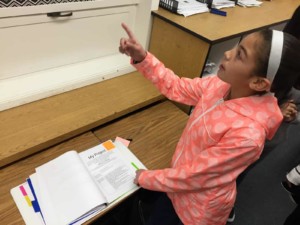Airplane i3 Comments
The biggest change for the most people in i3 regs released about 12 hours ago is the requirement for a full app for Development Grants (25 pages with attachments instead of the 4-5 page short form).
The second most important change is a tweak to the 20% match section which delays hard match until “following the peer review of applications.” That will avoid a lot of begging for contingent grants.
Otherwise, the Department changed little but took hundreds of pages to answer hundreds of questions—some well intentioned, some dumb. The guidelines still clearly focus on high-need students. Here’s a little new info:
- Projects of 3-5 years
- Scale-up grants: Up to $50m, avg $40m, up to 5
- Validation grants: Up to $30m, avg $17.5m, up to 100 (think this is a typo and should be 10 unless they add $1b to the budget)
- Development grants: Up to $5m, avg $3m, up to 100 (these projected averages are interesting; don’t you think most folks will ask for max?)
- No AYP requirement
- No grantee will receive more than 2 grants or grants totaling more than $55m
- Intent to apply is due in 20 days, apps due in 60 days
Despite a few changes, there is still a high bar for applicants “with a record of improving student achievement and attainment in order to expand the implementation of, and investment in, innovative practices that are demonstrated to have an impact on improving student achievement or student growth, closing achievement gaps, decreasing dropout rates, increasing high school graduation rates, or increasing college enrollment and completion rates.” But, as noted, gone are the AYP requirements. That means a school district with a strong track record or a nonprofit organization that can “demonstrate that it has a record of significantly improving student achievement, attainment, or retention through its record of work with an LEA or schools.” That’s still open to interpretation but it does open the door for nonprofits (or high performing districts) to work with districts not meeting AYP.
Evidence is likely to be at least as important as plans and capacity (similar conclusion by Eduflack). Scale-Up grants still requires ‘strong evidence’ including strong internal and external validity (ie causal and generalizable). This seems to have TFA and NLNS written all over it, “An applicant for a Scale-Up grant may also demonstrate success through an intermediate variable strongly correlated with these outcomes, such as teacher or principal effectiveness.”
Validation grants require ‘moderate evidence’
“from previous studies whose designs can support causal conclusions (i.e., studies with high internal validity) but have limited generalizability (i.e., moderate external validity), or studies with high external validity but moderate internal validity. The following would constitute moderate evidence: (1) at least one well-designed and well-implemented (as defined in this notice) experimental or quasi-experimental study (as defined in this notice) supporting the effectiveness of the practice, strategy, or program, with small sample sizes or other conditions of implementation or analysis that limit generalizability; (2) at least one well-designed and well-implemented (as defined in this notice) experimental or quasi-experimental study (as defined in this notice) that does not demonstrate equivalence between the intervention and comparison groups at program entry but that has no other major flaws related to internal validity; or (3) correlational research with strong statistical controls for selection bias and for discerning the influence of internal factors.
Development grants provide funding to
support high potential and relatively untested practices, strategies, or programs whose efficacy should be systematically studied. An applicant must provide evidence that the proposed practice, strategy, or program, or one similar to it, has been attempted previously, albeit on a limited scale or in a limited setting, and yielded promising results that suggest that more formal and systematic study is warranted. An applicant must provide a rationale for the proposed practice, strategy, or program that is based on research findings or reasonable hypotheses, including related research or theories in education and other sectors.
An applicant for a Development grant must estimate the number of students to be served by the project, and provide evidence of the applicant’s ability to implement and appropriately evaluate the proposed project and, if positive results are obtained, its capacity (e.g., in terms of qualified personnel, financial resources, or management capacity) to further develop and bring the project to a larger scale directly or through partners either during or following the grant period.
Like draft regs, applicants choose one of the assurances 1) effective teachers/leaders, 2) data, 3) standards, and 4) turnarounds. In the fourth category, the Department removed the definition of low-performing schools. The competitive preferences 1) early learning, 2) college access, 3) special needs 4) rural
Here’s the selection scoring system. Duncan gets the rank order list from reviewers but gets to consider “other info.” Note the important language from the first section, “exceptional, unmet, not widely adopted,”
| Category | Scale-Up | Validation | Development |
| Need & Quality of Design(1) | 15 | 20 | 25 |
| Strength of research, sig/mag of effect | 20 | 15 | 10 |
| Experience of the applicant | 15 | 20 | 25 |
| Quality of the project evaluation | 15 | 15 | 15 |
| Strategy & capacity to bring to scale (2) | 15 | 10 | 5 |
| Sustainability | 10 | 10 | 10 |
| Management plan & personnel | 10 | 10 | 10 |
(1) “proposed project represents an exceptional approach to the priorities the eligible applicant is seeking to meet (i.e., addresses a largely unmet need, particularly for high-need students, and is a practice, strategy, or program that has not already been widely adopted).”
(2) “must include an estimate of the costs for the eligible applicant or others (including other partners) to reach 100,000, 500,000, and 1,000,000 students.”
The all important page limits: Scale-up grants — 50 pages, Validation grants — 35 pages, and Development grants — 25 pages. This does not apply to Part I, the cover sheet; Part II, the budget section, including the narrative budget justification; Part IV, the assurances and certifications; or the one-page abstract, the resumes, the bibliography, or the letters of support.
Pre-Application Workshops: March 19, 2010, in Baltimore, Maryland; March 24, 2010, in Denver, Colorado; and March 30, 2010, in Atlanta, Georgia.
The short form for Development grants is gone, but reviewers won’t even bother reading your eval sections (past and proposed) unless you make the cut.
Competitive Bonus Trivia:
- No competitive preference points for serving multiple subgroups (ie special needs and rural) and
- The Department will not award additional points simply for addressing more than one competitive preference priority.
One mistake: the Department declined to adopt ‘instructional effectiveness’ over ‘teacher effectiveness’ (p60 Federal Register). Like foundation funded teacher effectiveness initiatives, the focus on the teacher limits from the field of vision new instructional delivery strategies including online learning. If you start with student learning, it leaves open far more creative strategies for instructional delivery.
And my usual bone, the legislative language is limited to LEAs and nonprofits ( See similar comments from Andy Smarick with a private school angle). ED is the only department that isn’t engaging the private sector. If they really were interested in innovation, they would have asked for a leg language change. The fallback on statutory language on p145 is just lame. A program called Invest in Innovation should do just that, and do it with folks likely to produce, scale, and sustain innovation—and that’s not schools districts and nonprofits. Oh well, let’s make the best of it.
Call your favorite grant writer and get started–it’s a 60 day sprint. Send me an email if you want to discuss your plan, [email protected].






0 Comments
Leave a Comment
Your email address will not be published. All fields are required.